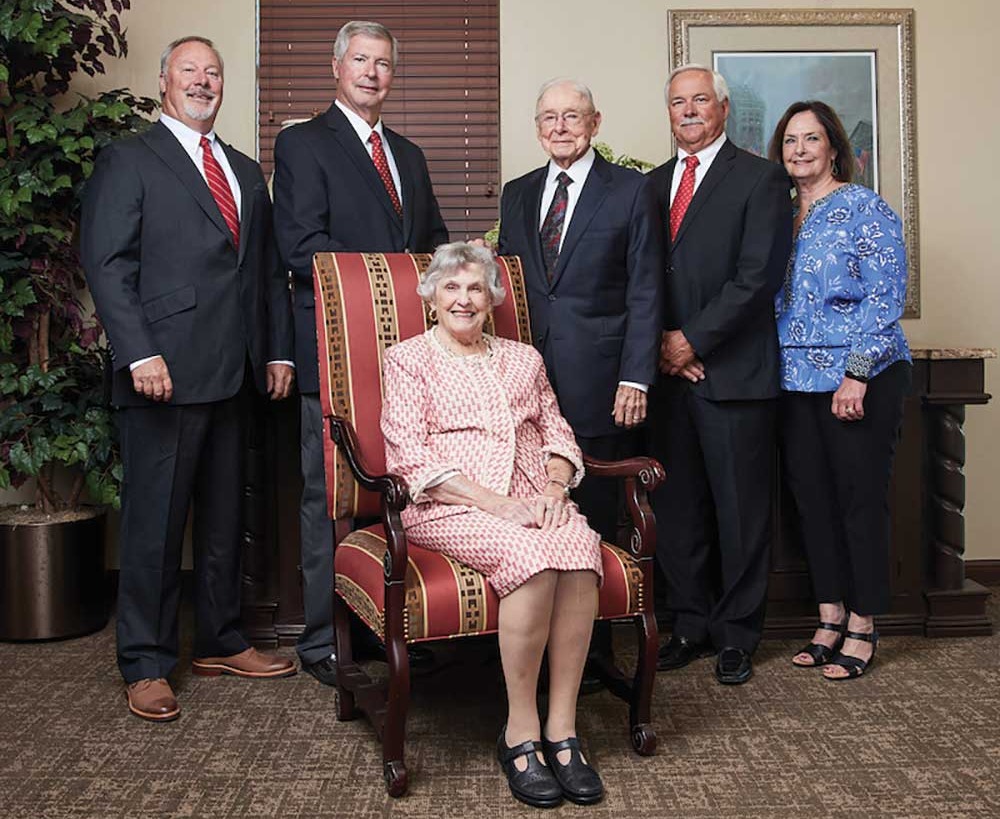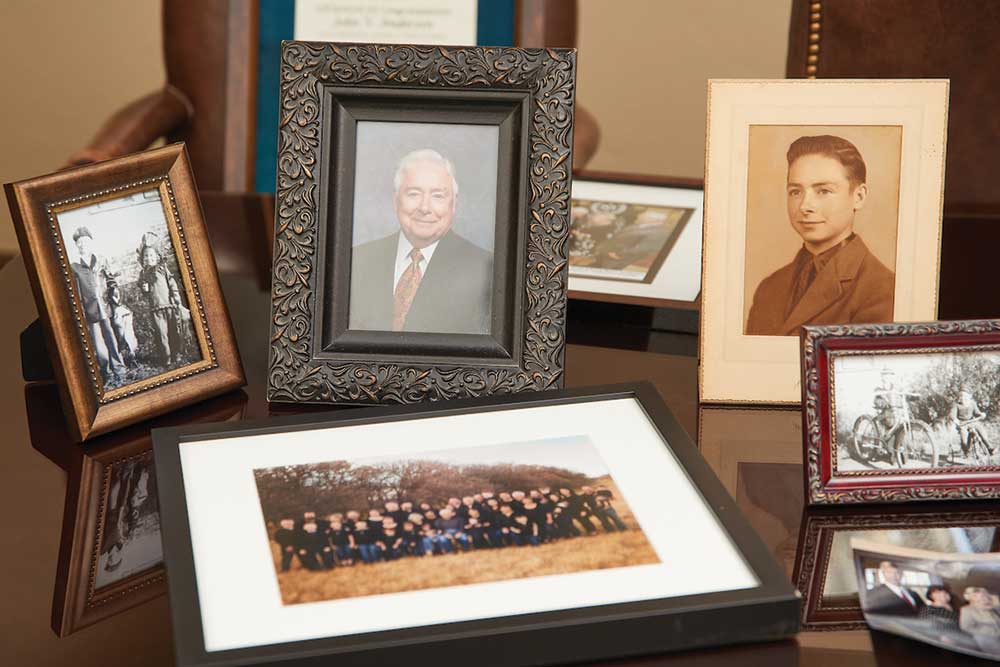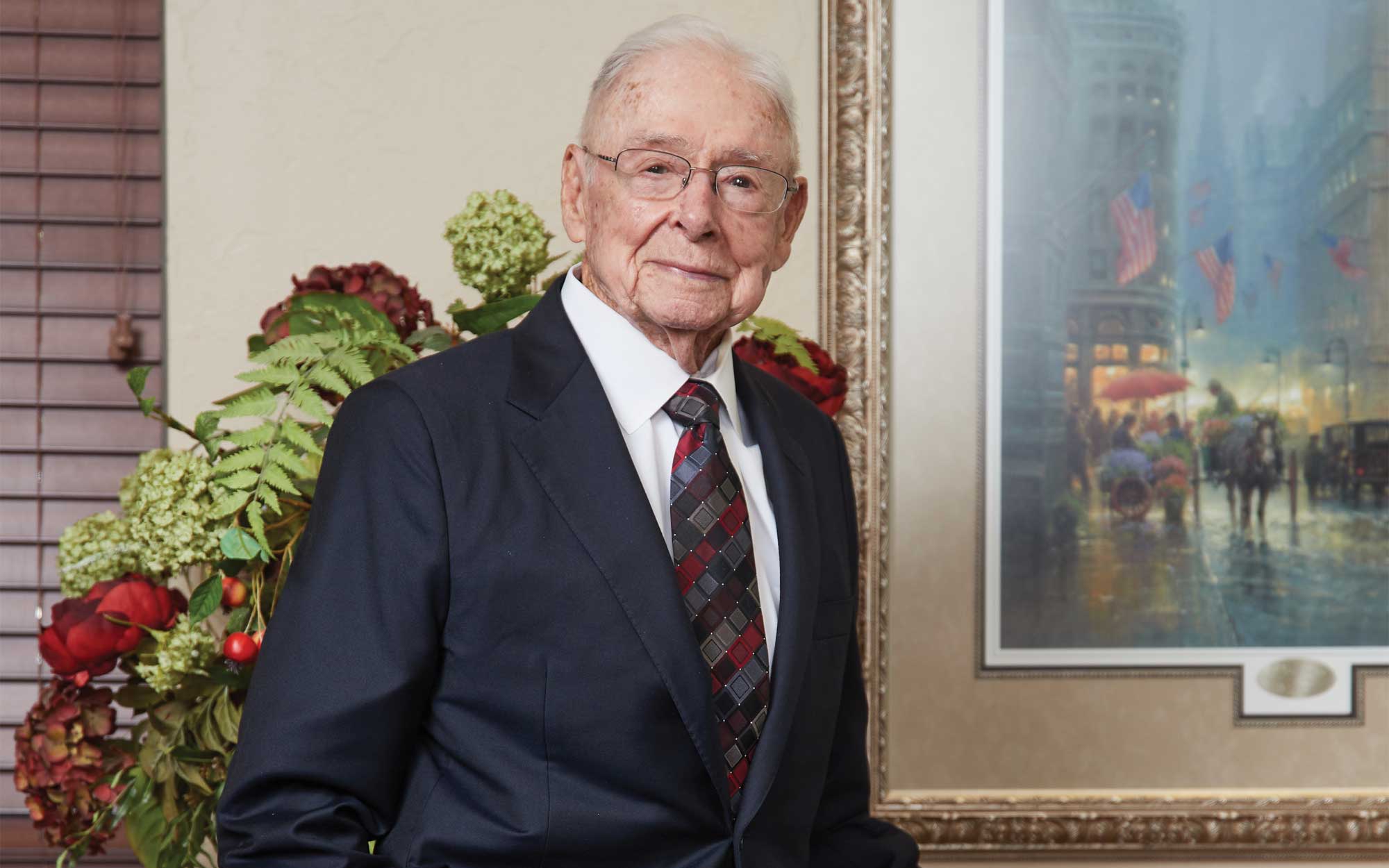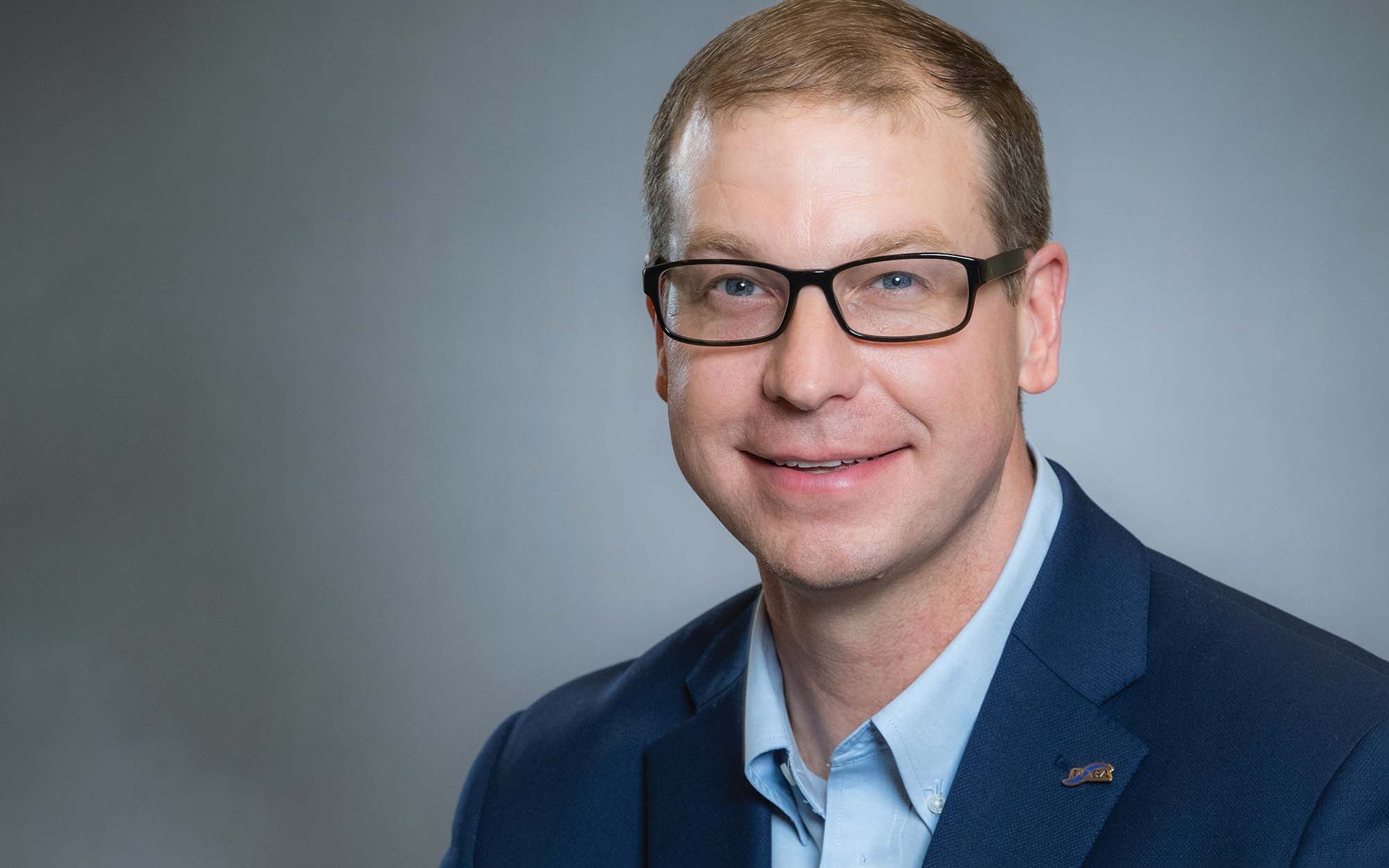Name:
F&M Bank
Assets:
$650 million
Location:
Crescent, Okla.
How do you capture a life in 1,000 words? The answer: with difficulty. And when that life takes in the Great Depression, World War II and 75 years in community banking, the challenge becomes more acute. But here goes nothing.
John V. Anderson, who is 95, is chairman emeritus of F&M Bank in Crescent, Okla. Since buying it 50 years ago, he has watched it grow from a single-branch community bank to one with nine locations across the state and $650 million in assets. His three sons and one daughter are all involved in the 100% family-owned business, as are three of his grandchildren.
“And I’ve got great-grandchildren now that are beginning to drive cars, so that’s the next wave that wants a job,” he laughs.
“In these 75 years, I’ve made a lot of friends. I just did the best I could at whatever job I had.”—John V. Anderson, F&M Bank
Anderson’s family ties have always been strong. He was born into a farming family in Choctaw, Okla., in 1927. His father’s family, members of the Citizens Potawatomi Nation, farmed corn and cotton, and his mother came from a produce farming family.
When Anderson was three, his father lost his job at the local utility company. “We had to skimp and save,” he says. “We picked cotton, and we chopped cotton and corn. We didn’t have a car, so we had to walk out to the fields. That made such an impression on me. So, every job I’ve had, I would do the best job I could.”
In 1945, right after high school, he enlisted in the Navy, finishing boot camp right as the U.S. dropped the bombs on Hiroshima and Nagasaki. He was stationed on an aircraft carrier and took part in Operation Magic Carpet, which saw U.S. troops collecting armed forces personnel from various Pacific islands and dropping them off at San Diego or Pearl Harbor. “We were a part of a really joyful time, because everybody was coming home,” Anderson says.
The banking adventure begins
After he was discharged, he worked at a utility company before taking a job at Liberty National Bank in Oklahoma City in 1947. There, he worked his way up from messenger to teller to the correspondence department. The latter is where he met his wife, Jo Laverne, who is 93.
“She worked about 10 feet from me … and I thought she was a pretty good-looking girl. I’d shoot a rubber band back there once in a while just to get her attention,” he laughs. The couple celebrated their 73rd wedding anniversary in September.

Anderson (center, standing), who is chairman emeritus of F&M Bank; his three sons and one daughter, all of whom work at the community bank; and his wife, Jo Laverne (seated).
But back to 1972. That year, Anderson was senior vice president of operations at Liberty when one of his industry connections, J.R. Gibson, who owned F&M Bank in Crescent, Okla., told Anderson he was looking to sell due to health problems.
“He said, ‘If you are interested, you’d be my first choice,’” Anderson says. “I said, ‘J.R., let me tell you that I don’t have any money, I have no net worth and I have no secondary source of income. But I’ll see what I can do.’”
Anderson went to some colleagues at Liberty National Bank, and they agreed to consider loaning him the $548,000 he needed—about $4 million today. “And I thought, if you make me a loan, you’re probably the worst loan officers I’ve ever run into,” he laughs. “But anyhow, they made that loan.”
Anderson says that when one of the presidents at Liberty heard about the loan, he said, “Let me tell you something. You’re gonna be one of the last guys that can buy a bank with just sweat equity.”
And so began the Anderson family’s ownership of F&M Bank. It was a baptism of fire: The late 1970s and early 1980s brought a recession, high inflation and higher interest rates; Anderson was paying 18% interest on the loan he used to buy the bank. But F&M survived through hard work and the connections Anderson had made.

Memories of John V. Anderson’s life in community banking and elsewhere.
Since then, the community bank’s growth has been steady. It acquired a handful of distressed banks over the years and opened branches to expand its footprint. Anderson has been an active member of the Oklahoma Bankers Association and ICBA, and he also sat on the board of First National Bank & Trust Co., a Potawatomi tribal bank in Shawnee, Okla. His son, John Tom Anderson, is a current director.
“We have excellent relations with the tribe, and [F&M Bank] does some loans with the Bureau of Indian Affairs,” Anderson says.
Today, he and his family have their eyes on the future. “Right now, we’re in the process of drawing up rules for employing family members,” he says. “We want them to have a good education, and we want them to work someplace else for three or four years to see what it’s like to work for somebody that’s very objective. We want them to observe the same standards that everybody observes when they come to work for us.”
In 2019, Anderson was inducted into the Oklahoma Bankers Hall of Fame. “I thought that was something,” he says. “I’ve done that through mentors and friendships, and in these 75 years I’ve made a lot of friends. I just did the best I could at whatever job I had.”
John V. Anderson’s deep belief in education
Having gone straight from high school to the Navy and then into the workforce, John V. Anderson never went to college.
His first employer in banking, Liberty National Bank in Oklahoma City, Okla., offered banking courses for free to its employees—as long as learners passed. “Well, I took advantage of all those courses that I could,” Anderson says.
Later, he went to the Graduate School of Banking in Madison, Wis., and also relied on mentors. “Some of them were guys who had made it through in banking during the big Depression,” he says. “They were really seasoned bankers, and I appreciated what they did to help me along.
“I’m a real believer in getting all the education that you can in a field that you think you’re gonna enjoy.”






